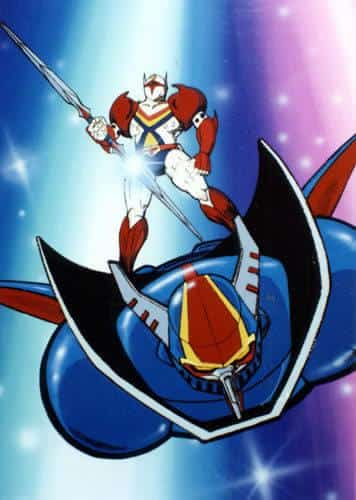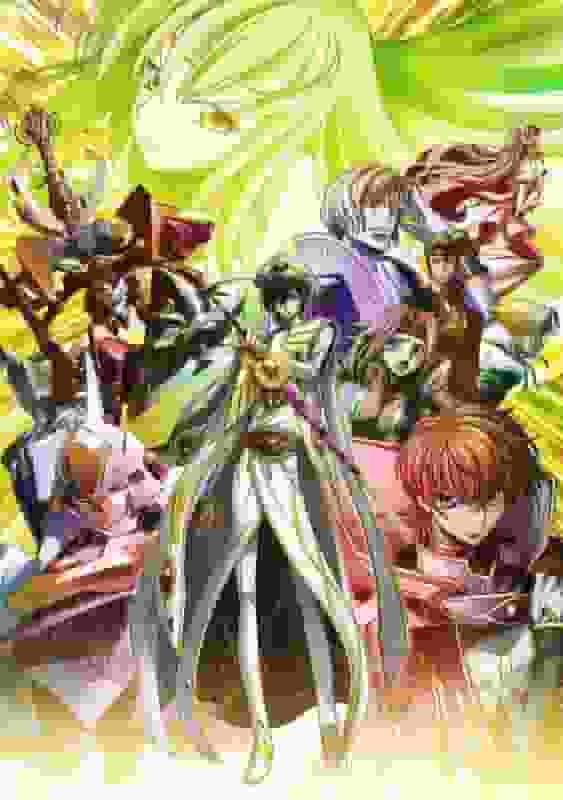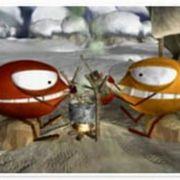Space Knight Tekkaman review: The charm of the good old days and its influence on the modern era

Tekkaman, the Space Knight - Tekkaman, the Space Knight■ Public MediaTV anime series ■ Original MediaAnime Original ■ Broadcast periodJuly 2, 1975 - December 24, 1975 Every Wednesday 19:00-19:30 ■Broadcasting stationNET (TV Asahi) ■Frequencieshalf an hour ■ Number of EpisodesEpisode 26 ■Original StoryTatsunoko Productions Planning Office ■ DirectorGeneral Director: Hiroshi Sasagawa (episodes 1-13), Nagayuki Toriumi (episodes 14-26) ■ ProductionNET TV, Tatsunoko Productions ■Works©Tatsunoko Productions ■ StoryDue to environmental deterioration, the Earth is on the brink of extinction. As humanity seeks new frontiers and advances in space exploration, it is attacked by the villainous star group Waldaster, who plots to conquer the entire universe. A young man named Minami Joji, whose father was killed by Waldaster, transforms into a superhuman Tekkaman clad in reinforced armor using the transformation system installed in his support robot "Pegasus." As a member of the special combat team "Space Knights," he challenges Waldaster to a fight for the future of humanity. ■ExplanationThis is a sci-fi hero action story about Tekkaman, a superhuman with reinforced body and armor, who faces off against an alien invasion force plotting to wipe out all of humanity. Set against the backdrop of a hard-hitting sci-fi setting in which the Earth is on the brink of collapse due to environmental pollution and a plan for human migration through space development, the story depicts the battles of the "Space Knights" who run freely through space. "Space Knight Tekkaman," which aired in 1975, is a science fiction hero anime produced by Tatsunoko Productions, and its unique worldview and character settings attracted viewers. In particular, the scene in which the main character, Minami Joji, transforms into Tekkaman and his teamwork with the Space Knights members made a strong impression on children at the time. In addition, the overwhelming power of the villainous Star Cluster Waldaster and the courage of the heroes who confronted him moved viewers and depicted the universal theme of the conflict between justice and evil. This work touches on the social issues of the time, such as environmental pollution and the future of the Earth, and although it is an anime for children, it has a deep message. Furthermore, the quality of the battle scenes in outer space and the mechanical designs are high, making it very visually appealing. In particular, the mechanical designs by Kunio Okawara can be said to have played a part in driving the robot anime boom of the time. In terms of music, the soundtrack by Bob Sakuma and the theme song "Tekkaman no Uta" sung by Ichiro Mizuki are also important elements that enhance the atmosphere of the anime. The combination of these elements made "Space Knight Tekkaman" a huge hit and a major influence on later sci-fi hero anime. ■Cast・Minami Joji (Tekkaman) / Mori Koji ・Tenchi Hiromi / Ueda Miyuki ・Andro Umeda / Yamada Yasuo ・Moutan / Komiya Kazue ・Pegasus / Tokumaru Kan ・Tenchi Director / Utsumi Kenji ・Lambos / Takiguchi Junpei ・Dobrai / Kuwahara Takeshi ・Narrator / Nakae Shinji ■ Main staff Producers: Kuri Ippei, Miyazaki Shinichi (episodes 14-26) ■ Main Characters・Minami Jouji (Tekkaman) ■Subtitle Episode 1: The Hero of the Sun Episode 2: The Villain Cluster Waldaster Episode 3: Shadow-Hunting Aliens Episode 4: The Birth of the Space Knights Episode 5: The Asteroid Mission Episode 6: The Lunar Ant Hell Episode 7: Space Transport Ship K432 ■ Related worksTekkaman Blade, the Space Knight Tekkaman Blade II ■ Theme songs and music・OP ■Detailed review"Space Knight Tekkaman" is a science fiction hero anime produced by Tatsunoko Productions that aired in 1975, and its unique worldview and character settings drew viewers. The scene where the main character, Minami Joji, transforms into Tekkaman and his teamwork with the Space Knights members made a strong impression on children at the time. In addition, the overwhelming power of the villainous Star Cluster Waldaster and the courage of the heroes who confronted him moved viewers and depicted the universal theme of the conflict between justice and evil. This work also touches on the social issues of the time, such as environmental pollution and the future of the Earth, and although it is an anime for children, it has a deep message. Furthermore, the quality of the battle scenes in outer space and the mechanical designs are high, making it visually appealing. In particular, it can be said that the mechanical designs by Kunio Okawara played a part in driving the robot anime boom of the time. In terms of music, the soundtrack by Bob Sakuma and the theme song "Tekkaman no Uta" sung by Ichiro Mizuki are also important elements that liven up the atmosphere of the anime. The combination of these elements made "Space Knight Tekkaman" a huge hit, and a work that had a major influence on later generations of sci-fi hero anime. The story unfolds simply as Minami Joji confronts Waldaster, his father's enemy, but the human drama and friendship depicted in the film, as well as the fight to protect the future of the Earth, deeply move viewers. In particular, the bond between the Space Knights members and their courage in facing difficulties are important elements that give courage and hope to children. In addition, the overwhelming power of the villainous planet Waldaster and the courage of the heroes who confront them move viewers and also depict the universal theme of the conflict between good and evil. The work also touches on the social issues of the time, such as environmental pollution and the future of the Earth, and has a deep message despite being an anime for children. In particular, the setting of humanity exploring space in search of new frontiers against the backdrop of the Earth's environmental problems is an important element that makes viewers think about the future of the Earth. Furthermore, the quality of the battle scenes and mechanical designs in outer space is high, making it visually appealing. In particular, it can be said that the mechanical designs by Kunio Okawara played a part in driving the robot anime boom of the time. In terms of music, the soundtrack by Bob Sakuma and the theme song "Tekkaman no Uta" sung by Ichiro Mizuki are also important elements that liven up the atmosphere of the anime. The combination of these elements made "Space Knight Tekkaman" a huge hit and a major influence on later sci-fi hero anime. The work also touches on the social issues of the time, such as environmental pollution and the future of the Earth, and has a deep message despite being an anime for children. In particular, the setting of humanity exploring space in search of new frontiers against the backdrop of the Earth's environmental problems is an important element that makes viewers think about the future of the Earth. Furthermore, the quality of the battle scenes and mechanical designs in outer space is high, making it visually appealing. In particular, it can be said that the mechanical designs by Kunio Okawara played a part in driving the robot anime boom of the time. In terms of music, the soundtrack by Bob Sakuma and the theme song "Tekkaman no Uta" sung by Ichiro Mizuki are also important elements that liven up the atmosphere of the anime. The combination of these elements made "Space Knight Tekkaman" a huge hit and a major influence on later sci-fi hero anime. The work also touches on the social issues of the time, such as environmental pollution and the future of the Earth, and has a deep message despite being an anime for children. In particular, the setting of humanity exploring space in search of new frontiers against the backdrop of the Earth's environmental problems is an important element that makes viewers think about the future of the Earth. Furthermore, the quality of the battle scenes and mechanical designs in outer space is high, making it visually appealing. In particular, it can be said that the mechanical designs by Kunio Okawara played a part in driving the robot anime boom of the time. In terms of music, the soundtrack by Bob Sakuma and the theme song "Tekkaman no Uta" sung by Ichiro Mizuki are also important elements that liven up the atmosphere of the anime. The combination of these elements made "Space Knight Tekkaman" a huge hit and a major influence on later sci-fi hero anime. The work also touches on the social issues of the time, such as environmental pollution and the future of the Earth, and has a deep message despite being an anime for children. In particular, the setting of humanity exploring space in search of new frontiers against the backdrop of the Earth's environmental problems is an important element that makes viewers think about the future of the Earth. Furthermore, the quality of the battle scenes and mechanical designs in outer space is high, making it visually appealing. In particular, it can be said that the mechanical designs by Kunio Okawara played a part in driving the robot anime boom of the time. In terms of music, the soundtrack by Bob Sakuma and the theme song "Tekkaman no Uta" sung by Ichiro Mizuki are also important elements that liven up the atmosphere of the anime. The combination of these elements made "Space Knight Tekkaman" a huge hit and a major influence on later sci-fi hero anime. The work also touches on the social issues of the time, such as environmental pollution and the future of the Earth, and has a deep message despite being an anime for children. In particular, the setting of humanity exploring space in search of new frontiers against the backdrop of the Earth's environmental problems is an important element that makes viewers think about the future of the Earth. Furthermore, the quality of the battle scenes and mechanical designs in outer space is high, making it visually appealing. In particular, it can be said that the mechanical designs by Kunio Okawara played a part in driving the robot anime boom of the time. In terms of music, the soundtrack by Bob Sakuma and the theme song "Tekkaman no Uta" sung by Ichiro Mizuki are also important elements that liven up the atmosphere of the anime. The combination of these elements made "Space Knight Tekkaman" a huge hit and a major influence on later sci-fi hero anime. The work also touches on the social issues of the time, such as environmental pollution and the future of the Earth, and has a deep message despite being an anime for children. In particular, the setting of humanity exploring space in search of new frontiers against the backdrop of the Earth's environmental problems is an important element that makes viewers think about the future of the Earth. Furthermore, the quality of the battle scenes and mechanical designs in outer space is high, making it visually appealing. In particular, it can be said that the mechanical designs by Kunio Okawara played a part in driving the robot anime boom of the time. In terms of music, the soundtrack by Bob Sakuma and the theme song "Tekkaman no Uta" sung by Ichiro Mizuki are also important elements that liven up the atmosphere of the anime. The combination of these elements made "Space Knight Tekkaman" a huge hit and a major influence on later sci-fi hero anime. The work also touches on the social issues of the time, such as environmental pollution and the future of the Earth, and has a deep message despite being an anime for children. In particular, the setting of humanity exploring space in search of new frontiers against the backdrop of the Earth's environmental problems is an important element that makes viewers think about the future of the Earth. Furthermore, the quality of the battle scenes and mechanical designs in outer space is high, making it visually appealing. In particular, it can be said that the mechanical designs by Kunio Okawara played a part in driving the robot anime boom of the time. In terms of music, the soundtrack by Bob Sakuma and the theme song "Tekkaman no Uta" sung by Ichiro Mizuki are also important elements that liven up the atmosphere of the anime. The combination of these elements made "Space Knight Tekkaman" a huge hit and a major influence on later sci-fi hero anime. The work also touches on the social issues of the time, such as environmental pollution and the future of the Earth, and has a deep message despite being an anime for children. In particular, the setting of humanity exploring space in search of new frontiers against the backdrop of the Earth's environmental problems is an important element that makes viewers think about the future of the Earth. Furthermore, the quality of the battle scenes and mechanical designs in outer space is high, making it visually appealing. In particular, it can be said that the mechanical designs by Kunio Okawara played a part in driving the robot anime boom of the time. In terms of music, the soundtrack by Bob Sakuma and the theme song "Tekkaman no Uta" sung by Ichiro Mizuki are also important elements that liven up the atmosphere of the anime. The combination of these elements made "Space Knight Tekkaman" a huge hit and a major influence on later sci-fi hero anime. The work also touches on the social issues of the time, such as environmental pollution and the future of the Earth, and has a deep message despite being an anime for children. In particular, the setting of humanity exploring space in search of new frontiers against the backdrop of the Earth's environmental problems is an important element that makes viewers think about the future of the Earth. Furthermore, the quality of the battle scenes and mechanical designs in outer space is high, making it visually appealing. In particular, it can be said that the mechanical designs by Kunio Okawara played a part in driving the robot anime boom of the time. In terms of music, the soundtrack by Bob Sakuma and the theme song "Tekkaman no Uta" sung by Ichiro Mizuki are also important elements that liven up the atmosphere of the anime. The combination of these elements made "Space Knight Tekkaman" a huge hit and a major influence on later sci-fi hero anime. The work also touches on the social issues of the time, such as environmental pollution and the future of the Earth, and has a deep message despite being an anime for children. In particular, the setting of humanity exploring space in search of new frontiers against the backdrop of the Earth's environmental problems is an important element that makes viewers think about the future of the Earth. Furthermore, the quality of the battle scenes and mechanical designs in outer space is high, making it visually appealing. In particular, it can be said that the mechanical designs by Kunio Okawara played a part in driving the robot anime boom of the time. In terms of music, the soundtrack by Bob Sakuma and the theme song "Tekkaman no Uta" sung by Ichiro Mizuki are also important elements that liven up the atmosphere of the anime. The combination of these elements made "Space Knight Tekkaman" a huge hit and a major influence on later sci-fi hero anime. The work also touches on the social issues of the time, such as environmental pollution and the future of the Earth, and has a deep message despite being an anime for children. In particular, the setting of humanity exploring space in search of new frontiers against the backdrop of the Earth's environmental problems is an important element that makes viewers think about the future of the Earth. Furthermore, the quality of the battle scenes and mechanical designs in outer space is high, making it visually appealing. In particular, it can be said that the mechanical designs by Kunio Okawara played a part in driving the robot anime boom of the time. In terms of music, the soundtrack by Bob Sakuma and the theme song "Tekkaman no Uta" sung by Ichiro Mizuki are also important elements that liven up the atmosphere of the anime. The combination of these elements made "Space Knight Tekkaman" a huge hit and a major influence on later sci-fi hero anime. The work also touches on the social issues of the time, such as environmental pollution and the future of the Earth, and has a deep message despite being an anime for children. In particular, the setting of humanity exploring space in search of new frontiers against the backdrop of the Earth's environmental problems is an important element that makes viewers think about the future of the Earth. Furthermore, the quality of the battle scenes and mechanical designs in outer space is high, making it visually appealing. In particular, it can be said that the mechanical designs by Kunio Okawara played a part in driving the robot anime boom of the time. In terms of music, the soundtrack by Bob Sakuma and the theme song "Tekkaman no Uta" sung by Ichiro Mizuki are also important elements that liven up the atmosphere of the anime. The combination of these elements made "Space Knight Tekkaman" a huge hit and a major influence on later sci-fi hero anime. The work also touches on the social issues of the time, such as environmental pollution and the future of the Earth, and has a deep message despite being an anime for children. In particular, the setting of humanity exploring space in search of new frontiers against the backdrop of the Earth's environmental problems is an important element that makes viewers think about the future of the Earth. Furthermore, the quality of the battle scenes and mechanical designs in outer space is high, making it visually appealing. In particular, it can be said that the mechanical designs by Kunio Okawara played a part in driving the robot anime boom of the time. In terms of music, the soundtrack by Bob Sakuma and the theme song "Tekkaman no Uta" sung by Ichiro Mizuki are also important elements that liven up the atmosphere of the anime. The combination of these elements made "Space Knight Tekkaman" a huge hit and a major influence on later sci-fi hero anime. The work also touches on the social issues of the time, such as environmental pollution and the future of the Earth, and has a deep message despite being an anime for children. In particular, the setting of humanity exploring space in search of new frontiers against the backdrop of the Earth's environmental problems is an important element that makes viewers think about the future of the Earth. Furthermore, the quality of the battle scenes and mechanical designs in outer space is high, making it visually appealing. In particular, it can be said that the mechanical designs by Kunio Okawara played a part in driving the robot anime boom of the time. In terms of music, the soundtrack by Bob Sakuma and the theme song "Tekkaman no Uta" sung by Ichiro Mizuki are also important elements that liven up the atmosphere of the anime. The combination of these elements made "Space Knight Tekkaman" a huge hit and a major influence on later sci-fi hero anime. The work also touches on the social issues of the time, such as environmental pollution and the future of the Earth, and has a deep message despite being an anime for children. In particular, the setting of humanity exploring space in search of new frontiers against the backdrop of the Earth's environmental problems is an important element that makes viewers think about the future of the Earth. Furthermore, the quality of the battle scenes and mechanical designs in outer space is high, making it visually appealing. In particular, it can be said that the mechanical designs by Kunio Okawara played a part in driving the robot anime boom of the time. In terms of music, the soundtrack by Bob Sakuma and the theme song "Tekkaman no Uta" sung by Ichiro Mizuki are also important elements that liven up the atmosphere of the anime. The combination of these elements made "Space Knight Tekkaman" a huge hit and a major influence on later sci-fi hero anime. The work also touches on the social issues of the time, such as environmental pollution and the future of the Earth, and has a deep message despite being an anime for children. In particular, the setting of humanity exploring space in search of new frontiers against the backdrop of the Earth's environmental problems is an important element that makes viewers think about the future of the Earth. Furthermore, the quality of the battle scenes and mechanical designs in outer space is high, making it visually appealing. In particular, it can be said that the mechanical designs by Kunio Okawara played a part in driving the robot anime boom of the time. In terms of music, the soundtrack by Bob Sakuma and the theme song "Tekkaman no Uta" sung by Ichiro Mizuki are also important elements that liven up the atmosphere of the anime. The combination of these elements made "Space Knight Tekkaman" a huge hit and a major influence on later sci-fi hero anime. The work also touches on the social issues of the time, such as environmental pollution and the future of the Earth, and has a deep message despite being an anime for children. In particular, the setting of humanity exploring space in search of new frontiers against the backdrop of the Earth's environmental problems is an important element that makes viewers think about the future of the Earth. Furthermore, the quality of the battle scenes and mechanical designs in outer space is high, making it visually appealing. In particular, it can be said that the mechanical designs by Kunio Okawara played a part in driving the robot anime boom of the time. In terms of music, the soundtrack by Bob Sakuma and the theme song "Tekkaman no Uta" sung by Ichiro Mizuki are also important elements that liven up the atmosphere of the anime. The combination of these elements made "Space Knight Tekkaman" a huge hit and a major influence on later sci-fi hero anime. The work also touches on the social issues of the time, such as environmental pollution and the future of the Earth, and has a deep message despite being an anime for children. In particular, the setting of humanity exploring space in search of new frontiers against the backdrop of the Earth's environmental problems is an important element that makes viewers think about the future of the Earth. Furthermore, the quality of the battle scenes and mechanical designs in outer space is high, making it visually appealing. In particular, it can be said that the mechanical designs by Kunio Okawara played a part in driving the robot anime boom of the time. In terms of music, the soundtrack by Bob Sakuma and the theme song "Tekkaman no Uta" sung by Ichiro Mizuki are also important elements that liven up the atmosphere of the anime. The combination of these elements made "Space Knight Tekkaman" a huge hit and a major influence on later sci-fi hero anime. The work also touches on the social issues of the time, such as environmental pollution and the future of the Earth, and has a deep message despite being an anime for children. In particular, the setting of humanity exploring space in search of new frontiers against the backdrop of the Earth's environmental problems is an important element that makes viewers think about the future of the Earth. Furthermore, the quality of the battle scenes and mechanical designs in outer space is high, making it visually appealing. In particular, it can be said that the mechanical designs by Kunio Okawara played a part in driving the robot anime boom of the time. In terms of music, the soundtrack by Bob Sakuma and the theme song "Tekkaman no Uta" sung by Ichiro Mizuki are also important elements that liven up the atmosphere of the anime. The combination of these elements made "Space Knight Tekkaman" a huge hit and a major influence on later sci-fi hero anime. The work also touches on the social issues of the time, such as environmental pollution and the future of the Earth, and has a deep message despite being an anime for children. In particular, the setting of humanity exploring space in search of new frontiers against the backdrop of the Earth's environmental problems is an important element that makes viewers think about the future of the Earth. Furthermore, the quality of the battle scenes and mechanical designs in outer space is high, making it visually appealing. In particular, it can be said that the mechanical designs by Kunio Okawara played a part in driving the robot anime boom of the time. In terms of music, the soundtrack by Bob Sakuma and the theme song "Tekkaman no Uta" sung by Ichiro Mizuki are also important elements that liven up the atmosphere of the anime. The combination of these elements made "Space Knight Tekkaman" a huge hit and a major influence on later sci-fi hero anime. This work also touches on environmental pollution and the future of the Earth, which were social issues at the time, and yet has a deep message despite being a children's anime. In particular, the setting in which humanity pursues space development in search of new lands against the backdrop of the Earth's environmental issues is an important factor that encourages viewers to think about the future of the Earth. Furthermore, the quality of the battle scenes and mechanic designs in outer space is also high, and the visual appeal is also great. In particular, the mechanic design by Ogawara Kunio was one of the leading roles in the robot anime boom at the time. In addition, in terms of music, the soundtracks by Bob Sakuma and the theme song "Tekkaman no Song", sung by Mizuki Ichiro, are important elements that will inspire the atmosphere of the anime. These elements combined, "Knights of Space: Tekkaman" became a huge hit, and it has a major influence on future science fiction hero anime. This work also touches on environmental pollution and the future of the Earth, which were social issues at the time, and yet has a deep message despite being a children's anime. In particular, the setting in which humanity pursues space development in search of new lands against the backdrop of the Earth's environmental issues is an important factor that encourages viewers to think about the future of the Earth. Furthermore, the quality of the battle scenes and mechanic designs in outer space is also high, and the visual appeal is also great. In particular, the mechanic design by Ogawara Kunio was one of the leading roles in the robot anime boom at the time. In addition, in terms of music, the soundtracks by Bob Sakuma and the theme song "Tekkaman no Song", sung by Mizuki Ichiro, are important elements that will inspire the atmosphere of the anime. These elements combined, "Knights of Space: Tekkaman" became a huge hit, and it has a major influence on future science fiction hero anime. This work also touches on environmental pollution and the future of the Earth, which were social issues at the time, and yet has a deep message despite being a children's anime. In particular, the setting in which humanity pursues space development in search of new lands against the backdrop of the Earth's environmental issues is an important factor that encourages viewers to think about the future of the Earth. Furthermore, the quality of the battle scenes and mechanic designs in outer space is also high, and the visual appeal is also great. In particular, the mechanic design by Ogawara Kunio was one of the leading roles in the robot anime boom at the time. In addition, in terms of music, the soundtracks by Bob Sakuma and the theme song "Tekkaman no Song", sung by Mizuki Ichiro, are important elements that will inspire the atmosphere of the anime. These elements combined, "Knights of Space: Tekkaman" became a huge hit, and it has a major influence on future science fiction hero anime. This work also touches on environmental pollution and the future of the Earth, which were social issues at the time, and yet has a deep message despite being a children's anime. In particular, the setting in which humanity pursues space development in search of new lands against the backdrop of the Earth's environmental issues is an important factor that encourages viewers to think about the future of the Earth. Furthermore, the quality of the battle scenes and mechanic designs in outer space is also high, and the visual appeal is also great. In particular, the mechanic design by Ogawara Kunio was one of the leading roles in the robot anime boom at the time. In addition, in terms of music, the soundtracks by Bob Sakuma and the theme song "Tekkaman no Song", sung by Mizuki Ichiro, are important elements that will inspire the atmosphere of the anime. These elements combined, "Knights of Space: Tekkaman" became a huge hit, and it has a major influence on future science fiction hero anime. This work also touches on environmental pollution and the future of the Earth, which were social issues at the time, and yet has a deep message despite being a children's anime. In particular, the setting in which humanity pursues space development in search of new lands against the backdrop of the Earth's environmental issues is an important factor that encourages viewers to think about the future of the Earth. Furthermore, the quality of the battle scenes and mechanic designs in outer space is also high, and the visual appeal is also great. In particular, the mechanic design by Ogawara Kunio was one of the leading roles in the robot anime boom at the time. In addition, in terms of music, the soundtracks by Bob Sakuma and the theme song "Tekkaman no Song", sung by Mizuki Ichiro, are important elements that will inspire the atmosphere of the anime. These elements combined, "Knights of Space: Tekkaman" became a huge hit, and it has a major influence on future science fiction hero anime. This work also touches on environmental pollution and the future of the Earth, which were social issues at the time, and yet has a deep message despite being a children's anime. In particular, the setting in which humanity pursues space development in search of new lands against the backdrop of the Earth's environmental issues is an important factor that encourages viewers to think about the future of the Earth. Furthermore, the quality of the battle scenes and mechanic designs in outer space is also high, and the visual appeal is also great. In particular, the mechanic design by Ogawara Kunio was one of the leading roles in the robot anime boom at the time. In addition, in terms of music, the soundtracks by Bob Sakuma and the theme song "Tekkaman no Song", sung by Mizuki Ichiro, are important elements that will inspire the atmosphere of the anime. These elements combined, "Knights of Space: Tekkaman" became a huge hit, and it has a major influence on future science fiction hero anime. This work also touches on environmental pollution and the future of the Earth, which were social issues at the time, and yet has a deep message despite being a children's anime. In particular, the setting in which humanity pursues space development in search of new lands against the backdrop of the Earth's environmental issues is an important factor that encourages viewers to think about the future of the Earth. Furthermore, the quality of the battle scenes and mechanic designs in outer space is also high, and the visual appeal is also great. In particular, the mechanic design by Ogawara Kunio was one of the leading roles in the robot anime boom at the time. In addition, in terms of music, the soundtracks by Bob Sakuma and the theme song "Tekkaman no Song", sung by Mizuki Ichiro, are important elements that will inspire the atmosphere of the anime. These elements combined, "Knights of Space: Tekkaman" became a huge hit, and it has a major influence on future science fiction hero anime. This work also touches on environmental pollution and the future of the Earth, which were social issues at the time, and yet has a deep message despite being a children's anime. In particular, the setting in which humanity pursues space development in search of new lands against the backdrop of the Earth's environmental issues is an important factor that encourages viewers to think about the future of the Earth. Furthermore, the quality of the battle scenes and mechanic designs in outer space is also high, and the visual appeal is also great. In particular, the mechanic design by Ogawara Kunio was one of the leading roles in the robot anime boom at the time. In addition, in terms of music, the soundtracks by Bob Sakuma and the theme song "Tekkaman no Song", sung by Mizuki Ichiro, are important elements that will inspire the atmosphere of the anime. These elements combined, "Knights of Space: Tekkaman" became a huge hit, and it has a major influence on future science fiction hero anime. This work also touches on environmental pollution and the future of the Earth, which were social issues at the time, and yet has a deep message despite being a children's anime. In particular, the setting in which humanity pursues space development in search of new lands against the backdrop of the Earth's environmental issues is an important factor that encourages viewers to think about the future of the Earth. Furthermore, the quality of the battle scenes and mechanic designs in outer space is also high, and the visual appeal is also great. In particular, the mechanic design by Ogawara Kunio was one of the leading roles in the robot anime boom at the time. In addition, in terms of music, the soundtracks by Bob Sakuma and the theme song "Tekkaman no Song", sung by Mizuki Ichiro, are important elements that will inspire the atmosphere of the anime. These elements combined, "Knights of Space: Tekkaman" became a huge hit, and it has a major influence on future science fiction hero anime. This work also touches on environmental pollution and the future of the Earth, which were social issues at the time, and yet has a deep message despite being a children's anime. In particular, the setting in which humanity pursues space development in search of new lands against the backdrop of the Earth's environmental issues is an important factor that encourages viewers to think about the future of the Earth. Furthermore, the quality of the battle scenes and mechanic designs in outer space is also high, and the visual appeal is also great. In particular, the mechanic design by Ogawara Kunio was one of the leading roles in the robot anime boom at the time. In addition, in terms of music, the soundtracks by Bob Sakuma and the theme song "Tekkaman no Song", sung by Mizuki Ichiro, are important elements that will inspire the atmosphere of the anime. These elements combined, "Knights of Space: Tekkaman" became a huge hit, and it has a major influence on future science fiction hero anime. This work also touches on environmental pollution and the future of the Earth, which were social issues at the time, and yet has a deep message despite being a children's anime. In particular, the setting in which humanity pursues space development in search of new lands against the backdrop of the Earth's environmental issues is an important factor that encourages viewers to think about the future of the Earth. Furthermore, the quality of the battle scenes and mechanic designs in outer space is also high, and the visual appeal is also great. In particular, the mechanic design by Ogawara Kunio was one of the leading roles in the robot anime boom at the time. In addition, in terms of music, the soundtracks by Bob Sakuma and the theme song "Tekkaman no Song", sung by Mizuki Ichiro, are important elements that will inspire the atmosphere of the anime. These elements combined, "Knights of Space: Tekkaman" became a huge hit, and it has a major influence on future science fiction hero anime. This work also touches on environmental pollution and the future of the Earth, which were social issues at the time, and yet has a deep message despite being a children's anime. In particular, the setting in which humanity pursues space development in search of new lands against the backdrop of the Earth's environmental issues is an important factor that encourages viewers to think about the future of the Earth. Furthermore, the quality of the battle scenes and mechanic designs in outer space is also high, and the visual appeal is also great. In particular, the mechanic design by Ogawara Kunio was one of the leading roles in the robot anime boom at the time. In addition, in terms of music, the soundtracks by Bob Sakuma and the theme song "Tekkaman no Song", sung by Mizuki Ichiro, are important elements that will inspire the atmosphere of the anime. These elements combined, "Knights of Space: Tekkaman" became a huge hit, and it has a major influence on future science fiction hero anime. This work also touches on environmental pollution and the future of the Earth, which were social issues at the time, and yet has a deep message despite being a children's anime. In particular, the setting in which humanity pursues space development in search of new lands against the backdrop of the Earth's environmental issues is an important factor that encourages viewers to think about the future of the Earth. Furthermore, the quality of the battle scenes and mechanic designs in outer space is also high, and the visual appeal is also great. In particular, the mechanic design by Ogawara Kunio was one of the leading roles in the robot anime boom at the time. In addition, in terms of music, the soundtracks by Bob Sakuma and the theme song "Tekkaman no Song", sung by Mizuki Ichiro, are important elements that will inspire the atmosphere of the anime. These elements combined, "Knights of Space: Tekkaman" became a huge hit, and it has a major influence on future science fiction hero anime. This work also touches on environmental pollution and the future of the Earth, which were social issues at the time, and yet has a deep message despite being a children's anime. In particular, the setting in which humanity pursues space development in search of new lands against the backdrop of the Earth's environmental issues is an important factor that encourages viewers to think about the future of the Earth. Furthermore, the quality of the battle scenes and mechanic designs in outer space is also high, and the visual appeal is also great. In particular, the mechanic design by Ogawara Kunio was one of the leading roles in the robot anime boom at the time. In addition, in terms of music, the soundtracks by Bob Sakuma and the theme song "Tekkaman no Song", sung by Mizuki Ichiro, are important elements that will inspire the atmosphere of the anime. These elements combined, "Knights of Space: Tekkaman" became a huge hit, and it has a major influence on future science fiction hero anime. This work also touches on environmental pollution and the future of the Earth, which were social issues at the time, and yet has a deep message despite being a children's anime. In particular, the setting in which humanity pursues space development in search of new lands against the backdrop of the Earth's environmental issues is an important factor that encourages viewers to think about the future of the Earth. Furthermore, the quality of the battle scenes and mechanic designs in outer space is also high, and the visual appeal is also great. In particular, the mechanic design by Ogawara Kunio was one of the leading roles in the robot anime boom at the time. In addition, in terms of music, the soundtracks by Bob Sakuma and the theme song "Tekkaman no Song", sung by Mizuki Ichiro, are important elements that will inspire the atmosphere of the anime. These elements combined, "Knights of Space: Tekkaman" became a huge hit, and it has a major influence on future science fiction hero anime. This work also touches on environmental pollution and the future of the Earth, which were social issues at the time, and yet has a deep message despite being a children's anime. In particular, the setting in which humanity pursues space development in search of new lands against the backdrop of the Earth's environmental issues is an important factor that encourages viewers to think about the future of the Earth. Furthermore, the quality of the battle scenes and mechanic designs in outer space is also high, and the visual appeal is also great. In particular, the mechanic design by Ogawara Kunio was one of the leading roles in the robot anime boom at the time. In addition, in terms of music, the soundtracks by Bob Sakuma and the theme song "Tekkaman no Song", sung by Mizuki Ichiro, are important elements that will inspire the atmosphere of the anime. These elements combined, "Knights of Space: Tekkaman" became a huge hit, and it has a major influence on future science fiction hero anime. This work also touches on environmental pollution and the future of the Earth, which were social issues at the time, and yet has a deep message despite being a children's anime. In particular, the setting in which humanity pursues space development in search of new lands against the backdrop of the Earth's environmental issues is an important factor that encourages viewers to think about the future of the Earth. Furthermore, the quality of the battle scenes and mechanic designs in outer space is also high, and the visual appeal is also great. In particular, the mechanic design by Ogawara Kunio was one of the leading roles in the robot anime boom at the time. In addition, in terms of music, the soundtracks by Bob Sakuma and the theme song "Tekkaman no Song", sung by Mizuki Ichiro, are important elements that will inspire the atmosphere of the anime. These elements combined, "Knights of Space: Tekkaman" became a huge hit, and it has a major influence on future science fiction hero anime. This work also touches on environmental pollution and the future of the Earth, which were social issues at the time, and yet has a deep message despite being a children's anime. In particular, the setting in which humanity pursues space development in search of new lands against the backdrop of the Earth's environmental issues is an important factor that encourages viewers to think about the future of the Earth. Furthermore, the quality of the battle scenes and mechanic designs in outer space is also high, and the visual appeal is also great. In particular, the mechanic design by Ogawara Kunio was one of the leading roles in the robot anime boom at the time. In addition, in terms of music, the soundtracks by Bob Sakuma and the theme song "Tekkaman no Song", sung by Mizuki Ichiro, are important elements that will inspire the atmosphere of the anime. These elements combined, "Knights of Space: Tekkaman" became a huge hit, and it has a major influence on future science fiction hero anime. This work also touches on environmental pollution and the future of the Earth, which were social issues at the time, and yet has a deep message despite being a children's anime. In particular, the setting in which humanity pursues space development in search of new lands against the backdrop of the Earth's environmental issues is an important factor that encourages viewers to think about the future of the Earth. Furthermore, the quality of the battle scenes and mechanic designs in outer space is also high, and the visual appeal is also great. In particular, the mechanic design by Ogawara Kunio was one of the leading roles in the robot anime boom at the time. In addition, in terms of music, the soundtracks by Bob Sakuma and the theme song "Tekkaman no Song", sung by Mizuki Ichiro, are important elements that will inspire the atmosphere of the anime. These elements combined, "Knights of Space: Tekkaman" became a huge hit, and it has a major influence on future science fiction hero anime. This work also touches on environmental pollution and the future of the Earth, which were social issues at the time, and yet has a deep message despite being a children's anime. In particular, the setting in which humanity pursues space development in search of new lands against the backdrop of the Earth's environmental issues is an important factor that encourages viewers to think about the future of the Earth. Furthermore, the quality of the battle scenes and mechanic designs in outer space is also high, and the visual appeal is also great. In particular, the mechanic design by Ogawara Kunio was one of the leading roles in the robot anime boom at the time. In addition, in terms of music, the soundtracks by Bob Sakuma and the theme song "Tekkaman no Song", sung by Mizuki Ichiro, are important elements that will inspire the atmosphere of the anime. These elements combined, "Knights of Space: Tekkaman" became a huge hit, and it has a major influence on future science fiction hero anime. This work also touches on environmental pollution and the future of the Earth, which were social issues at the time, and yet has a deep message despite being a children's anime. In particular, the setting in which humanity pursues space development in search of new lands against the backdrop of the Earth's environmental issues is an important factor that encourages viewers to think about the future of the Earth. Furthermore, the quality of the battle scenes and mechanic designs in outer space is also high, and the visual appeal is also great. In particular, the mechanic design by Ogawara Kunio was one of the leading roles in the robot anime boom at the time. In addition, in terms of music, the soundtracks by Bob Sakuma and the theme song "Tekkaman no Song", sung by Mizuki Ichiro, are important elements that will inspire the atmosphere of the anime. These elements combined, "Knights of Space: Tekkaman" became a huge hit, and it has a major influence on future science fiction hero anime. |
<<: The appeal and reviews of "Space Wars": A must-see science fiction anime masterpiece
Recommend
Alien star Sigourney Weaver receives Venice Lifetime Achievement Award
Recently, actress Sigourney Weaver, who starred i...
K-ON! Spin-off: Relive a special moment of music and friendship
"K-ON! Extra Edition" - The daily life ...
Halo TV Series Confirms Cast for Cortana and Dr. Halsey
At the Television Critics Association (TCA) annua...
Review and impressions of "The Outcast: The Great Show of Luo Tian": Don't miss the action and the charm of the story
The appeal and evaluation of "The Outcast: T...
The second season of "Spy Classroom" will be broadcast in July and the first season will be replayed on April 19
Adapted from the popular light novel, the officia...
The appeal and reviews of "Harukanaru Toki no Naka de ~ Ajisai Yume Monogatari": A moving work that fans must see
"Harukanaru Toki no Naka de ~Hydrangea Yume ...
The Chinese trailer of the action film "Daho Beauty Warriors" says they are unstoppable
Recently, the Chinese trailer of the action movie...
Harry Potter themed restaurants to open in Tokyo and Nagoya to celebrate the 20th anniversary of the film
According to Famitsu, Japan's Legs company wi...
"Attack on Titan" OAD Blu-ray Disc Released with All 8 Episodes
The official "Attack on Titan" announce...
ASUKA - History of Japan - Review: An anime that combines the charm of ancient times with a modern perspective
The appeal and evaluation of "ASUKA -The His...
The appeal and reviews of "RUN=DIM": Exploring the depths of a story that keeps on running
"RUN=DIM": Future robot battles meet yo...
Kojima Productions launches new division to focus on film, TV and music
Kojima, who has always been passionate about movi...
Rumor has it that Asians can't play leading roles in Hollywood because they look too handsome and don't look Asian.
Recently, a YouTuber interviewed Hollywood Chines...
Another funny hero: Warner DC will make a live-action movie of "Rubber Man"
According to foreign media reports, as "Wond...
Robert Downey Jr. bids farewell to Marvel? Fans find it hard to accept that his contract is about to expire
According to Taiwanese media reports, "Aveng...









